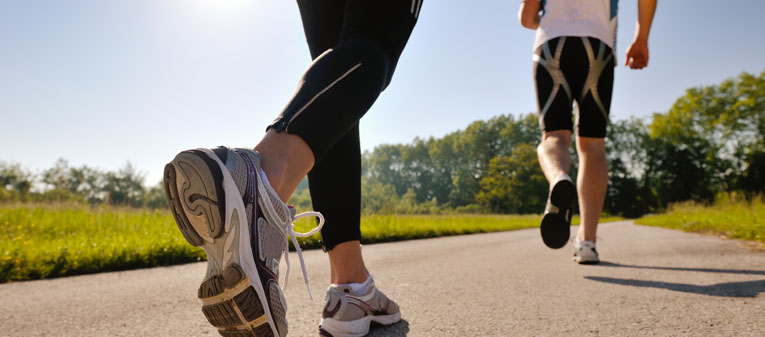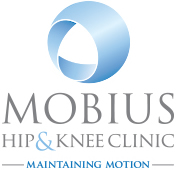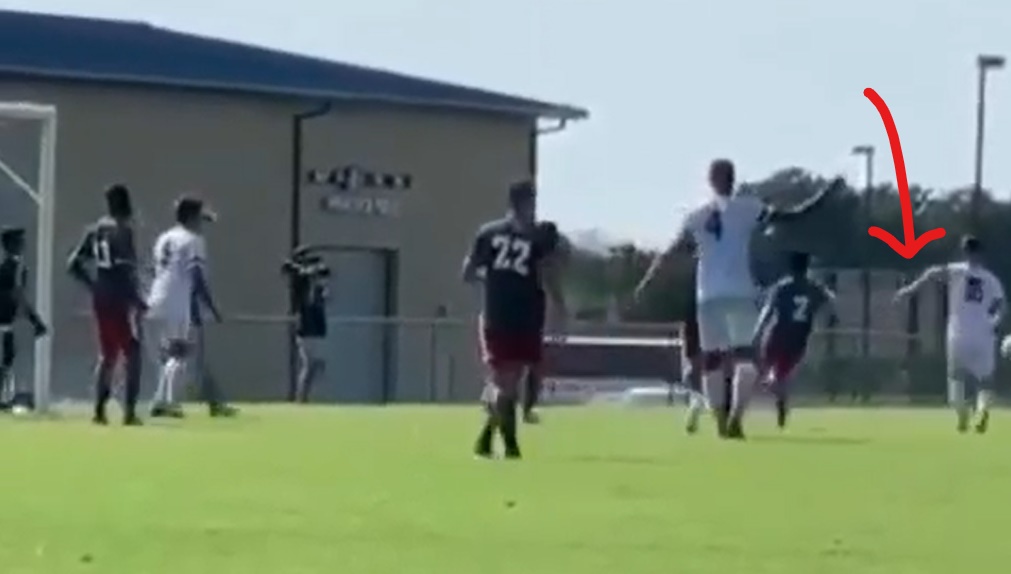
About your hip
The hip is one of the largest joints in the human body. It is a ball-and-socket joint, and the socket is formed by the acetabulum, which is part of the pelvis bone. The ball is the femoral head, which is the upper end of the thigh bone (femur).
The bone surfaces of the ball and socket are covered with articular cartilage, which is a smooth tissue that cushions the ends of the bones and allows them to move easily. The hip is surrounded by a thin tissue called synovial membrane. In a healthy hip, this membrane produces a small amount of fluid that eliminates almost all friction during hip movement. The hip capsule along with bands of tissue called ligaments connect the femoral head to the acetabulum and provide stability to the hip joint. Various diseases or abnormal conditions make you feel pain or a sense of discomfort.
Your hip joint is designed for both stability and mobility. The hip joint allows your entire lower limb to move in three planes of motion: forward and backward, side to side and rotating right and left. Your hip joint provides important shock absorption to the upper body as well as stability during standing and other weight-bearing activities.
The hip is a ball and socket joint which unites two separate bones: the femur with the pelvis. The pelvis features two cup-shaped depressions called the acetabulum, one on either side of the body. The femur is the longest bone in the body and connects to the pelvis at the hip joint. The head of the femur, which is shaped like a ball, fits tightly into the acetabulum, forming the ball and socket joint. This allows the leg to move forward and backward, side to side, and rotate right and left. The acetabulum is lined with cartilage, which cushions the bones during weight-bearing activities and allows the joint to rotate freely in all planes of movement, with minimal friction.
The complex system of ligaments that connect the femur to the pelvis are essential for stability, keeping the hip from moving outside of its normal planes of movement. The muscles of the hip joint have dual responsibilities working together to stabilise the entire lower extremity during standing, walking, or other weight-bearing activities as well as to provide the power for the hip to move in all directions.
Hip pain is a common symptom that can be caused by a wide variety of problems. The precise location of your hip pain can provide valuable clues about the underlying cause.
Problems within the hip joint itself tend to result in pain on the inside of your hip or your groin. Hip pain on the outside of the hip, upper thigh or outer buttock is usually caused by problems with muscles, ligaments, tendons and other soft tissues that surround the hip joint.
Hip pain can sometimes be caused by diseases and conditions in other areas of the body, such as in the lower back or the knees. This type of pain is called referred pain. Hip pain may be caused by arthritis (e.g. osteoarthritis, rheumatoid arthritis, psoriatic arthritis and septic arthritis), injuries (e.g. bursitis, dislocation, hip fracture, labral tear, inguinal hernia, sprains and strains, and tendinitis) or other problems (e.g. pinched nerves like meralgia paresthetica, bone cancer, osteoporosis, and avascular necrosis).
Swelling in the hip can be caused by any inflammation diseases, including arthritis or infection.
Of these, hip bursitis is one of the common reasons of a swollen hip. Bursitis is inflammation of the bursa. There are two major bursae in the hip that typically become irritated and inflamed. One bursa covers the bony point of the hip bone called the greater trochanter. Inflammation of this bursa is called trochanteric bursitis. Another bursa is located on the groin side of the hip. When this bursa becomes inflamed, despite the pain being in the groin area, the condition is sometimes referred to as hip bursitis. This condition is not as common as trochanteric bursitis, but is treated in a similar manner. Hip bursitis can affect anyone, but is more common in women and middle-aged or elderly people.
Risk factors associated with the development of hip bursitis are repetitive stress (overuse) injury, hip injury, diseases of the lower spine, leg-length inequality, rheumatoid arthritis and bone spurs or calcium deposits.
Snapping hip is a condition in which you feel a snapping sensation or hear a popping sound in the hip when you walk, get up from a chair, or swing your leg around. The snapping sensation occurs when a muscle or tendon (which is the strong tissue that connects muscle to bone) moves over a bony prominence in the hip.
Although snapping hip is usually painless and harmless, the sensation can be annoying. In some cases, snapping hip leads to bursitis, a painful swelling of the fluid-filled sacs that cushion the hip. Snapping hip is most often the result of tightness in the muscles and tendons surrounding the hip.
People who are involved in sports and activities that require repeated bending at the hip, like dancers, are more likely to experience snapping hip. Young student athletes are also more likely to have snapping hip. This is because tightness in the muscle structures of the hip is common during adolescent growth spurts.
Joint range of movement naturally declines as you age, but it can also occur with several conditions.
As for the hip, any disease or injury with pain or swelling can cause decreased range of movement. Also, hip mobility limitations have been suggested to be present in some conditions of the lumbar spine.
Directly relevant to the hip itself, these mobility limitations have been found in patients with severe to moderate osteoarthritis, sports-related groin pain, and femoroacetabular impingement (FAI) and/or hip labral tear. Patients with FAI and labral tear tend to exhibit reduced hip range of movement for flexion, internal rotation, and/or adduction.
Giving way in the hip can occur for several reasons. They could be labral tear, cartilage injuries, hip dysplasia, or systemic diseases which weaken muscles around the hip.
Other potential causes of giving way are unstable flaps of articular cartilage or loose bodies (loose pieces of cartilage and/or bone floating around within the hip). Usually, pain or abnormal feelings occur with a sense of giving way in the hip.
The major types of arthritis that affect the hip are osteoarthritis, rheumatoid arthritis, spondyloarthritis, and psoriatic arthritis.
Of these, osteoarthritis is the most common form of arthritis in the hip. It is a degenerative arthritis that often affects people between the ages of 50 and 60 years old. The causes of osteoarthritis of the hip are not known, however factors that may contribute include joint injury, increasing age, and being overweight. In osteoarthritis, the cartilage in the hip joint gradually wears away. As the cartilage wears away, it becomes frayed and rough, and the protective space between the bones decreases. This can also result in painful bone spurs. Osteoarthritis develops slowly and the pain it causes worsens over time. As with other arthritic conditions, initial treatment of osteoarthritis of the hip is nonsurgical. We may recommend a range of treatment options, such as physical therapy, losing weight, using assistive devices (e.g. canes), or medications. We may recommend total hip replacement if your pain from osteoarthritis causes disability, and is not relieved with nonsurgical treatment.
Rheumatoid arthritis is a chronic disease that attacks multiple joints throughout the body, including the hip joint. It usually affects the same joint on both sides of the body (symmetrical). In rheumatoid arthritis, the synovial membrane that covers the hip joint begins to swell which leads to hip pain and stiffness. Rheumatoid arthritis is an autoimmune disease. The immune system attacks its own tissues, in other words, the immune system damages normal tissue such as cartilage and softens the bone.
Spondyloarthritis is a name for a family of inflammatory rheumatic diseases that cause arthritis, which attacks the spine and, in some people, joints including the hip. It can also involve the skin, intestines and eyes. Though the main symptom in most patients is low back pain, in a minority of patients the major symptom is pain and swelling in the hip. People in their teens and 20’s (particularly males) are affected most often. Family members of those with spondyloarthritis are also at higher risk.
Psoriatic arthritis is a type of inflammation that occurs in about 15 percent of patients who have a skin rash called psoriasis. In some people, it can affect the large joints, especially those of the lower extremities such as the hip. Early diagnosis is important to avoid damage to joints. Psoriatic arthritis can occur in people without skin psoriasis, particularly in those who have relatives with psoriasis. Psoriatic arthritis usually appears in people between the ages of 30 to 50, but can begin as early as childhood. With this disease, men and women are equally at risk.
FAI is a condition where the bones of the hip are abnormally shaped. Because they do not fit well together, the hip bones rub against each other and cause damage to the hip joint. The bone overgrowth also causes the hip bones to hit against each other, rather than to move smoothly.
People with FAI usually have pain in the groin area, although the pain sometimes may be more toward the outside of the hip including the thigh and the upper knee. Sharp pain may occur with turning, twisting, and squatting, but sometimes it is just a dull pain.
Many FAI problems can be treated with arthroscopic surgery. Arthroscopic procedures are done with small incisions and thin instruments. There are three types of FAI: pincer, cam, and combined impingement.
Pincer-type: This type of impingement occurs because extra bone extends out over the normal rim of the acetabulum. The labrum can be crushed under the prominent rim of the acetabulum.
Cam-type: In cam impingement, the femoral head is not round and cannot rotate smoothly inside the acetabulum. A bump forms on the edge of the femoral head that grinds the cartilage inside the acetabulum.
Combined (Mixed)-type: Combined impingement just means that both the pincer and cam types are present.
This is a painful condition that occurs when the blood supply to the bone is disrupted. Because bone cells die without enough blood supply, AVN can ultimately lead to destruction of the hip joint and severe arthritis. AVN is also called osteonecrosis or aseptic necrosis.
Although it can occur in any bone, AVN most often affects the hip joint. In many cases, both hips are affected by the disease. Hip pain is typically the first symptom. This may lead to a dull ache or throbbing pain in the groin or buttock area.
As the disease progresses, it will become more difficult to stand and put weight on the affected hip, and moving the hip joint will be painful. It is important to diagnose this disease early, because some studies show that early treatment is associated with better outcomes.
In a normal hip, the ball at the upper end of the femur fits firmly into the acetabulum. In a young person with hip dysplasia, the acetabulum is too shallow to adequately support and cover the head of the femur.
This abnormality can cause a lot of pain in the hip and the early development of osteoarthritis. Adolescent hip dysplasia is usually the result of developmental dysplasia of the hip (DDH), a condition that occurs during a child's first year of life. These patients may not show symptoms of hip dysplasia until reaching adolescence.
Treatment for adolescent hip dysplasia focuses on relieving pain while preserving the patient's natural hip joint for as long as possible. In many cases, this is achieved through surgery to restore the normal anatomy of the joint and delay or prevent the onset of painful osteoarthritis.
The labrum is a rim of soft tissue or fibrocartilage that surrounds the acetabulum. The labrum adds to the stability of the hip by deepening the socket and protects the joint surface.
The labral tear is often related to FAI. The labrum can also tear when there is osteoarthritis in the hip, as a part of the overall degeneration of the joint. Labral tears often cause pain in the groin or front of the hip during physical activity, or with deep flexion and rotation of the hip. Some individuals with labral tears of the hip will also have clicking within the hip.
Treatment of labral tears is dependent on the severity of the symptoms and the specific characteristics of the tear. Labral tears that require surgery are treated with hip arthroscopy, a minimally invasive technique for treating damage within the hip.
Labral tears may be addressed with repair of the labral tissue by either using suture or debridement (removal of a small portion of the labrum), depending on the type of tear and the patient’s age.
LT is a triangular band that runs in the floor of the acetabulum, and progressively forms a cord like structure to attach to the femoral head. The role that LT serves in the hip joint is still unclear. It is likely that it serves to stabilise the hip at the extremes of motion, and works to give feedback as to when that limit is approaching.
Injury to the LT is more common in patients who have history of either a traumatic dislocation of the hip joint, FAI or hip dysplasia. It is common for patients with LT injuries to develop pain in the groin, which may be associated with a feeling of the hip being unstable.
Non-surgical treatment includes limiting the range of motion in the hip which can help reduce symptoms. Sometimes hip arthroscopy is recommended to address the tear and treat the lax capsule that allows the tear to occur.
Total Hip Replacement (THR) has been indicated as the surgical intervention with greatest improvement in hip pain. However, some patients continue to experience hip pain after THR. The reasons of the pain directly related to prosthesis or surgery (i.e. complication) may be: infection, blood clot (DVT), dislocation, loosening and implant wear, nerve and blood vessel injury, bleeding, fracture and stiffness.
Pain originating from various sources and not directly linked to prosthesis or surgery may include the pain from abdominal organs and soft tissue sources such as trochanteric bursitis, tendinitis, hip abductor dysfunction and inguinal hernia.
Warning signs of blood clots are pain in your calf and leg that is unrelated to your incision, tenderness or redness of your calf, and new or increasing swelling of your lower extremity.
Warning signs of infection are persistent fever, shaking chills, increasing redness/tenderness/swelling of the hip wound, and drainage from the hip wound.
SUFE is an unusual disorder of the adolescent hip. For unknown reasons, the ball at the upper end of the femur slips off in a backward direction. This is due to weakness of the growth plate. Most often, it develops during periods of accelerated growth, shortly after the onset of puberty.
Typically, patients have a history of several weeks or months of hip or knee pain and an intermittent limp. In severe cases, patients are unable to bear any weight on the affected leg. The affected leg is usually turned outward in comparison to the normal leg. The affected leg may also appear to be shorter.
The goal of treatment is to prevent any additional slipping of the femoral head until the growth plate closes. Fixing the femoral head with pins or screws has been the treatment of choice for decades. There are several potential complications associated with SUFE, which include avascular necrosis (AVN) of the femoral head and chondrolysis a rapidly progressive loss of articular cartilage from both the femoral and acetabular sides of the hip.
Perthes disease is a childhood disorder which affects the head of the femur. In Perthes disease, the blood supply to the growth plate of the bone at the end of the femur becomes insufficient. As a result, the bone becomes necrotic.
It is not clear why this blood vessel problem occurs in the femoral head. Over several months, the blood vessels regrow and the blood supply returns to the dead bone tissue. New bone tissue is then laid down and the femoral head regrows and remodels over several years. The condition usually begins with hip or groin pain, or a limp. Sometimes, knee pain is the first symptom.
The pain persists and there may be wasting of the muscles in the upper thigh, shortening of the leg and stiffness of the hip, which can restrict movement and cause problems with walking. Some of the patients with Perthes disease have been treated with a plaster cast or brace, or surgery. However, at least half of the cases heal well without any treatment (particularly with milder cases, as well as with children aged five and under).
They are encouraged to go swimming (to keep the hip joint active in the full range of movements), but to avoid heavy impact on the joint such as running or jumping. The aim of treatment is to promote the healing process and to ensure that the femoral head remains well seated in the hip socket as it heals and remodels.
Hip and knee joints connect your bones and allow the movement of your lower extremity. Pain or discomfort in these joints can be caused by injury.
Depending on the cause of your pain, the solution might be a set of exercises, pain relief medication, minor/major surgery, or a combination of these.
If you have any further questions or wish to make an appointment, please do not hesitate to get in touch via telephone or email on our contacts page.
-

- Testimonials













